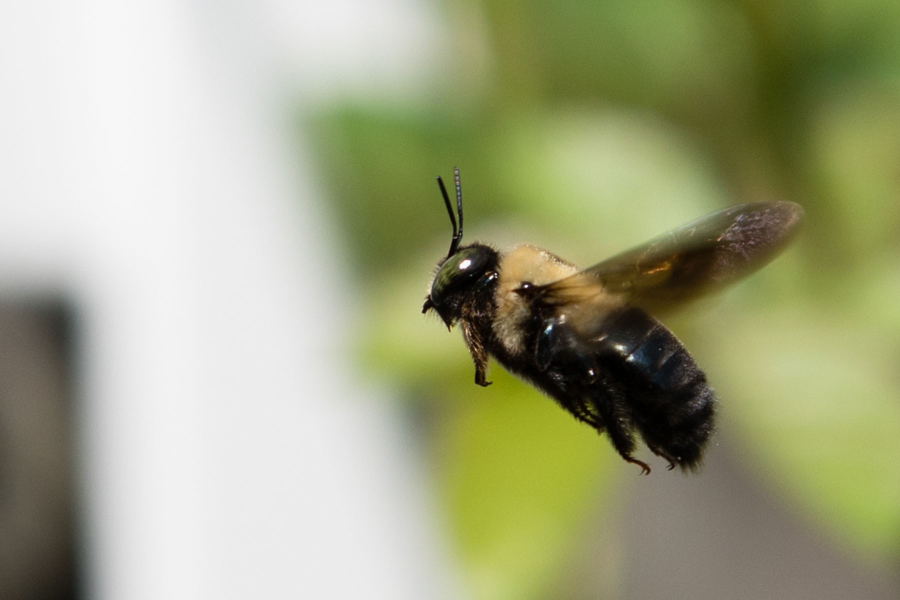Humble bumblebees create big buzz
Bumbling, buzzing insects play important pollination role

A carpenter bee hovers long enough for a closeup in the backyard of a District of Columbia resident on April 13, 2017. Carpenter bees can often be mistaken for their similar-looking relatives, bumblebees. Carpenter bees typically nest in pairs, boring holes in soft, unpainted wood—including decks, siding and outdoor furniture. On the other hand, bumblebees are social insects that typically nest underground in small colonies, venturing out in search of flowers from which to harvest pollen (for protein) and nectar (for energy).
Two of the bumblebee’s best-known characteristics are its fuzz and its buzz. Researchers recently discovered that the bees use their tiny, fuzzy hairs to detect electric fields, helping them navigate toward flowers. Once they find a suitable bloom, bumblebees practice “buzz pollination”: they huddle up against the bottom of a flower and vibrate their flight muscles, producing a buzzing sound and knocking pollen out of the flower and onto their hundreds of feathery hairs.
There are more than 250 known species of bumblebee across the world, although only about 20 of those are known to inhabit the Chesapeake Bay region. In the past, one such species was the rusty patched bumblebee, although its future in the region is now uncertain. Once a common sight across the watershed, the bee has been sighted just a handful of times in the region in the last 20 years. In 2014, a single rusty patched bumblebee was caught by a researcher near Front Royal, Virginia—the first time the insect had been seen in the eastern United States in five years.
The bee’s sharp decline led the U.S. Fish and Wildlife Service to place the rusty patched bumblebee on the Endangered Species List earlier this year, making it the first bee in the continental U.S. to be placed on the list. Pesticides, herbicides, loss of habitat, disease and climate change have all played a role in its disappearance, according to the agency.
Rusty patched bumblebees aren’t the only bees in trouble: a recent report from the Center for Biological Diversity found that populations of more than 700 bee species in North America are in decline. By planting native wildflowers, starting a pollinator garden and reducing the use of pesticides, you can help protect bumblebees and other pollinators.
Correction: A previous version of this article incorrectly identified the image as one of a bumblebee; the insect pictured is a carpenter bee. Learn about how to spot the differences between these similar-looking insects.

Comments
There are no comments.
Thank you!
Your comment has been received. Before it can be published, the comment will be reviewed by our team to ensure it adheres with our rules of engagement.
Back to recent stories